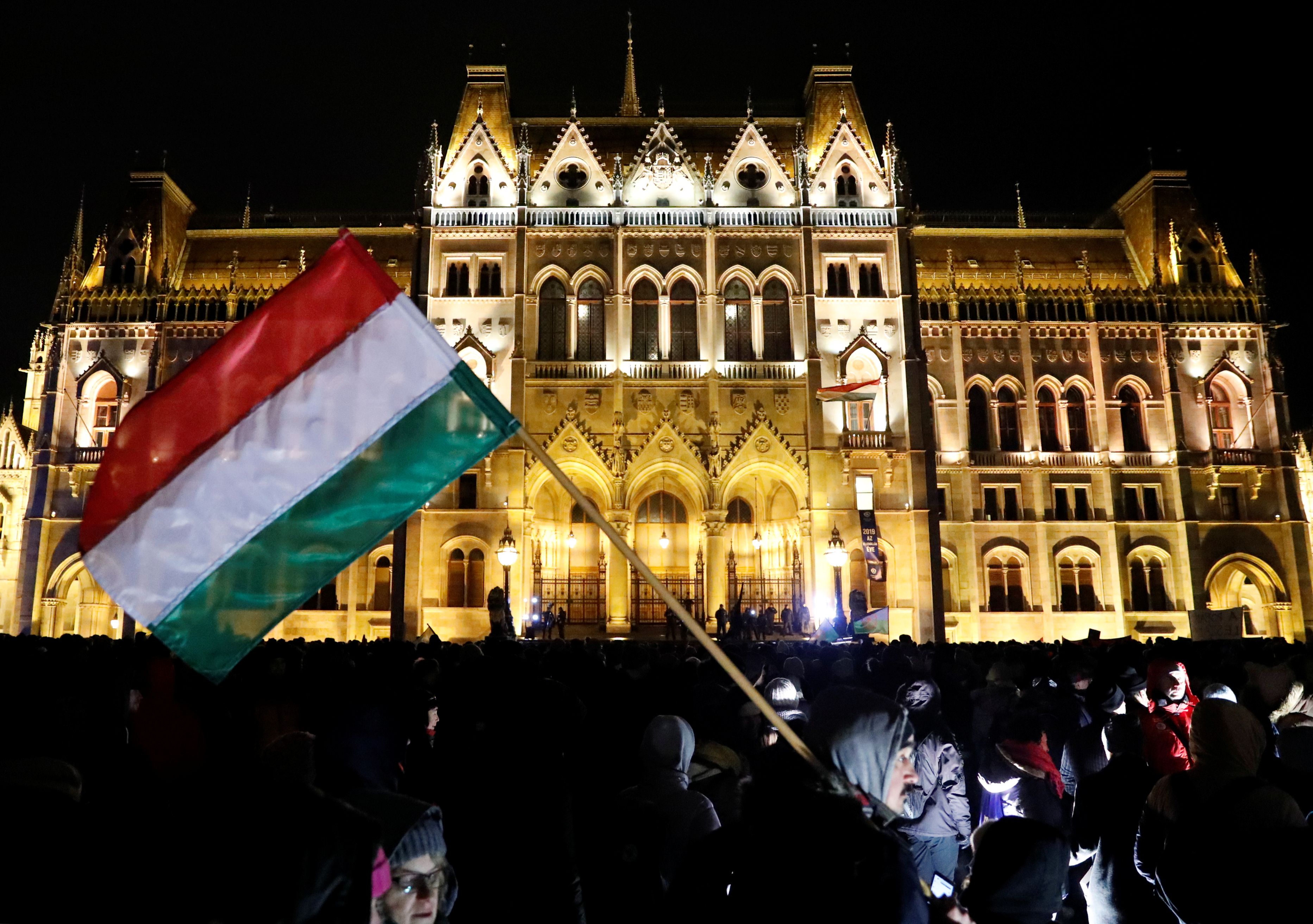The Next Evolution of Hungary’s Defence Policy

The New Strategy
The NBS, published in April, replaces the 2012 strategy and reflects the state’s reduced security environment. Hungary considers a surprise attack on its territory to be the main military threat, but does not specify the source. The NBS also considers the risk of a conflict in Hungary’s immediate neighbourhood, including one in which NATO members participate. The 2012 strategy considered such a risk marginal and put the emphasis on asymmetric threats originating outside Europe, such as international terrorism. In the new NBS, other threats include the violation of international law and “great power ambitions” that have led to the annexation of territories by force in its neighbourhood, although it neither explicitly names Russia as the aggressor nor Ukraine as the victim.
Given its relatively small territory, limited economic potential and weak defence capabilities, Hungary maintains the assumption in the NBS that the EU and NATO will play a key role in its pursuit of national interests. It continues to recognise NATO as the cornerstone of its security. At the same time—unlike in the 2012 strategy—the new NBS stresses the need to increase the EU’s defence capabilities, including the creation of a “joint European military force” when all Member States agree. Until then, EU defence cooperation should be developed within the established framework, including close cooperation with NATO.
The desire to strengthen European defence is also reflected in the Hungarian political discourse. Prime Minister Viktor Orbán has repeatedly indicated that he reckons the erosion of the Alliance, and in this context he has argued for the creation of European military potential independent of the U.S. He also has referred to the French concept of increasing Europe’s “sovereignty” in its policies towards the U.S. and NATO, and has expressed interest in renewing dialogue with Russia.
A new hierarchy of strategic partners is proposed. Germany takes the top spot while the U.S.—the most important partner in 2012—falls to third (despite the signing of a defence cooperation agreement in 2019). Poland is second, ahead of the U.S., but is seen mainly as a political partner. France, in turn, is perceived by Hungary as a partner with similar views about Islamist terrorism and irregular migration. Hungary also prioritises Central European cooperation. For the first time, the development of the Visegrad Group (V4) has been defined at the strategic level as a national interest. Hungary seeks to lead in the V4 and other regional formats, and declares openness to new defence-cooperation initiatives.
Defence Policy in NATO and the EU
Hungary’s contribution to NATO’s deterrence and defence policy against Russia is limited because of its approach to Russia, which is not perceived as a military threat. Its focus on developing bilateral political and economic cooperation with Russia stands in stark contrast with the declarations in the NBS regarding the threat of aggression against Hungary. Consequently, the country does not contribute military units either to the multinational battle groups on NATO’s Eastern Flank or to the multinational brigade in Romania. Hungary has only participated twice in the Baltic Air Policing mission (most recently in 2019). The Hungarian footprint in the NATO Force Structure will grow, however. A deployable command element for special forces (R-SOCC) is being built with Slovakia, Slovenia, Croatia, and partner Austria, and a division-level HQ for Central Europe (HQ MND-C) with Croatia. The latter mirrors the Poland-led HQ for Northeast Europe, established in Elbląg.
Hungary is also active in NATO missions: it deploys about 400 troops to Kosovo (KFOR mission; third-largest contingent) about 90 to Afghanistan (RSM mission) and about 150 to Iraq (NATO Mission Iraq, Global Coalition to Defeat ISIS). By the end of 2020, these contingents will be reinforced with a few dozen soldiers each. Within the EU, Hungary has deployed about 160 to Bosnia and Herzegovina (Althea) and 20 to the EUTM mission in Mali. Together with Poland, Czechia, Slovakia, and Croatia, Hungary contributed forces to the V4 EU Battle Group (on standby in the second half of 2019). Hungary also takes part in 10 projects run within the EU’s Permanent Structured Cooperation mechanism (PESCO). These are mostly small initiatives, one of which is a Polish-Hungarian project regarding medical training for special forces.
Partnerships in Armed Forces Modernisation
The NBS stresses the need to build up the Hungarian armed forces. Today, the around 27,000-strong military is based on two mechanised brigades equipped with legacy T-72M1 tanks, BTR-80 armoured vehicles, and Mi-24 helicopters in a combat-support role. Acquiring modern armaments has been impossible given the consecutive cuts in defence expenditures between 2009 and 2014. Hence, the only up-to-date system is Swedish multirole Gripen fighters, leased in 2003 (14 airframes). In just the last five years, Hungary has increased its defence budget—from €1.2 billion in 2015 to €2.2 billon planned for 2021 (or 1.66% of GDP; the NATO 2% target is to be achieved in 2024).
Sharp growth in defence expenditures is required to implement “Zrínyi 2026”, a €10 billion programme of a comprehensive technical modernisation of Hungary’s armed forces, mostly in partnership with Germany. Hungary decided to buy helicopters from Airbus—type H145 (20 airframes) and H225 (16). A batch of 44 brand-new Leopard 2 tanks was also ordered (A7+ variant) together with 24 PzH 2000 self-propelled howitzers, both manufactured by KMW, and 218 Lynx armoured vehicles (Rheinmetall). Thanks to these investments, Hungary should form one of Europe’s most modern heavy brigades by 2028, in line with commitments taken in NATO. At the same time, purchases of German-made armaments may allow much deeper integration with the Bundeswehr than Germany’s other regional partners, including Czechia, Romania, or Lithuania, which, like Hungary, work with the German military within the Framework Nation Concept (FNC). To this aim, Hungary and Germany signed agreements in 2019 on wide and deep cooperation of their land and air forces. Defence-industrial cooperation with Germany is also meant to grow—the agreed contracts assume investments in Hungary by Airbus, KMW, and Rheinmetall. American companies have secured only one contract so far: NASAMS air-and-missile defence systems, co-developed by U.S.-based Raytheon and the Norwegian firm Kongsberg.
Conclusions
The fast pace of investments in modern armaments and developing military cooperation in NATO/EU indicate that Hungary seeks to be a key security policy actor in Central Europe, however this may be difficult. The country is not significantly engaged in NATO defence and deterrence policy, which limits its position in the Alliance. Hungary also will not build bigger forces than Poland or Romania, even if the Hungarian armaments will be clearly more modern. Finally, Hungary is not particularly engaged in strengthening the U.S. military presence on the Eastern Flank.
Close defence cooperation with Germany and France is also a broader foreign policy instrument meant to confirm the pro-European orientation of Hungary while balancing the conflict with European institutions and some EU Member States over the rule of law. Hence, Hungary, in seeking European strategic autonomy, might engage in initiatives that could undermine NATO, possibly through political support for projects aimed at deepening defence cooperation outside the Alliance or the EU, or for developing the Union’s own mechanisms like PESCO without considering the capability goals set by NATO.
It is, however, in Poland’s interest that deepened European defence cooperation does not lead to the weakening of NATO. It could use its good bilateral relations with Hungary to start additional joint projects in PESCO that would directly address the aims agreed in NATO. Poland could also support the R-SOCC and HQ MND-C commands and, at the same time, encourage Hungary to engage more in NATO’s activities on the Eastern Flank, such as organising live exercises with the Baltic States in the tested format of the V4+B3.



